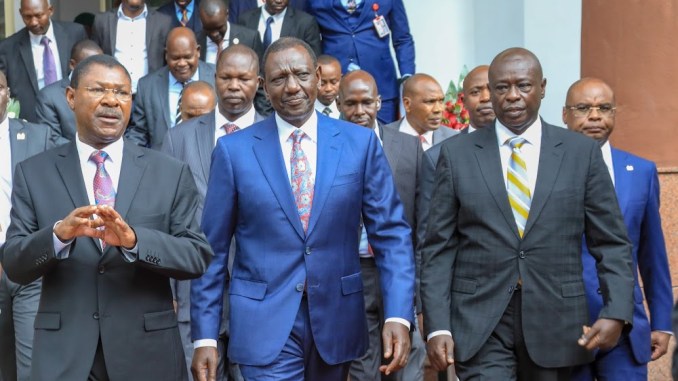
President William Ruto’s comprehensive agricultural transformation plan is taking root in Kenya, and the early results are highly promising. This bold initiative, aimed at improving the welfare of Kenyans and creating numerous job opportunities, is already making significant headway.
Ruto’s first pillar focuses on providing affordable working capital to farmers through cooperative societies. It’s not just a lofty promise; it’s a tangible reality. Financial support is flowing into the agricultural sector, ensuring that farmers have the financial backing they need to enhance their farming activities. This translates to tangible increases in productivity and improved livelihoods for many farming households.
The modernization of agricultural risk management is another key facet of this transformation. Farmers are increasingly embracing crop and livestock insurance, safeguarding their yields from unpredictable disasters. Introduction of commodity market instruments, such as forward contracts and price stabilization schemes, is reducing unpredictability and providing a safety net for farmers.
One of Ruto’s ambitious goals is to transform two million impoverished farmers into surplus producers. With input financing and comprehensive agricultural extension support, these farmers are experiencing remarkable increases in their productivity, moving them from struggling to thriving.
Key value food chains are also seeing notable improvements. Maize yields have jumped from 8 bags per acre to a remarkable 15 bags. Dairy and beef production are on the rise, with cows producing up to 7.5kg of milk per day, and beef carcass weights increasing from 110kg to 150kg. These transformations mean better incomes and living standards for many Kenyan households.
Reducing Kenya’s dependence on food imports is a top priority. Domestic production of oil crops has surged from 5% to 25%, and rice production has increased from 18% to 40%, enhancing food security and strengthening the nation’s economy.
The revival of underperforming and collapsed export crops, such as coffee, cashew nuts, pyrethrum, avocado, and macadamia nuts, is well underway. Kenyan farmers are witnessing renewed opportunities, and the export market is regaining its foothold, adding vital numbers to the nation’s economy.
The tea industry is also taking strategic steps up the value chain, focusing on blending and branding to enhance the value of Kenyan tea and create new opportunities and markets for the nation.
President Ruto’s agricultural revolution is bringing tangible improvements to Kenyan agriculture, increasing productivity, and raising incomes. Ruto’s plan is not just a vision; it’s a set of actions with substantial results, providing hope for a brighter future for Kenya.






